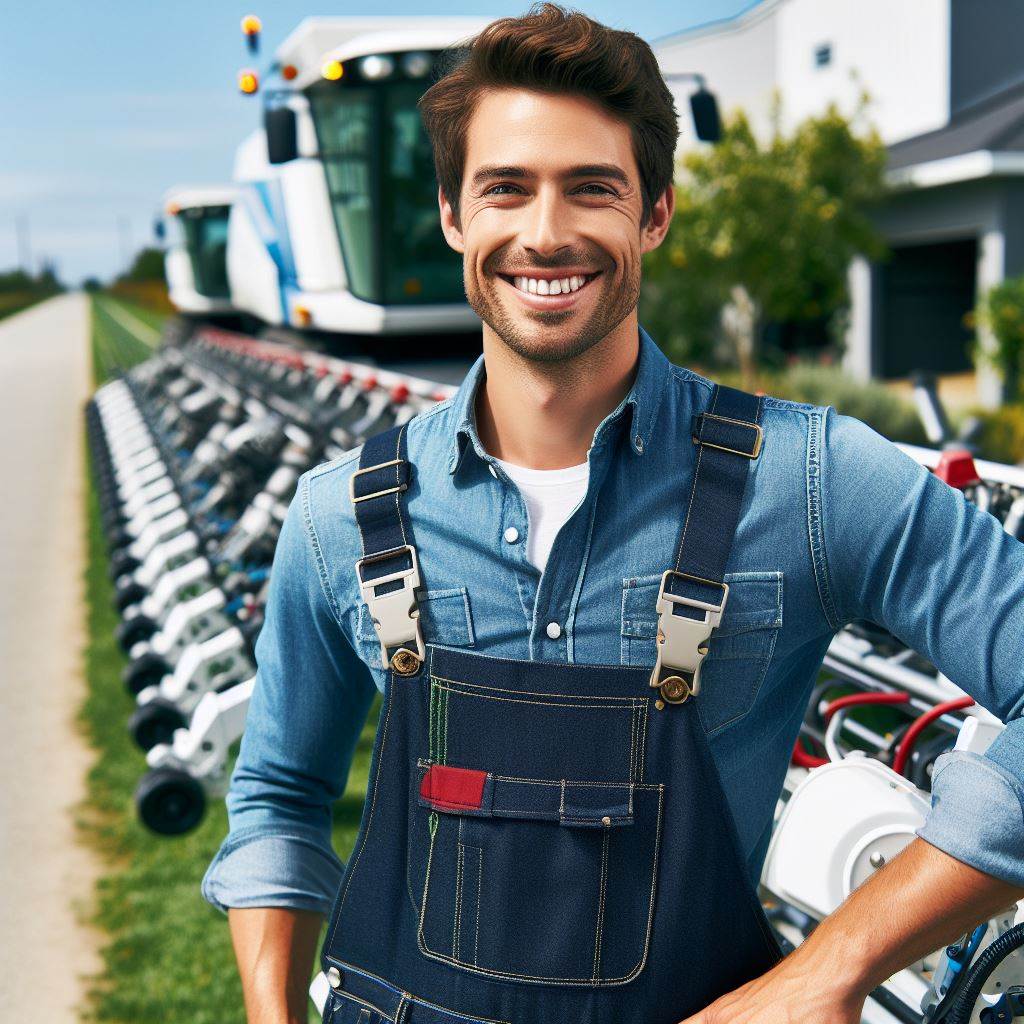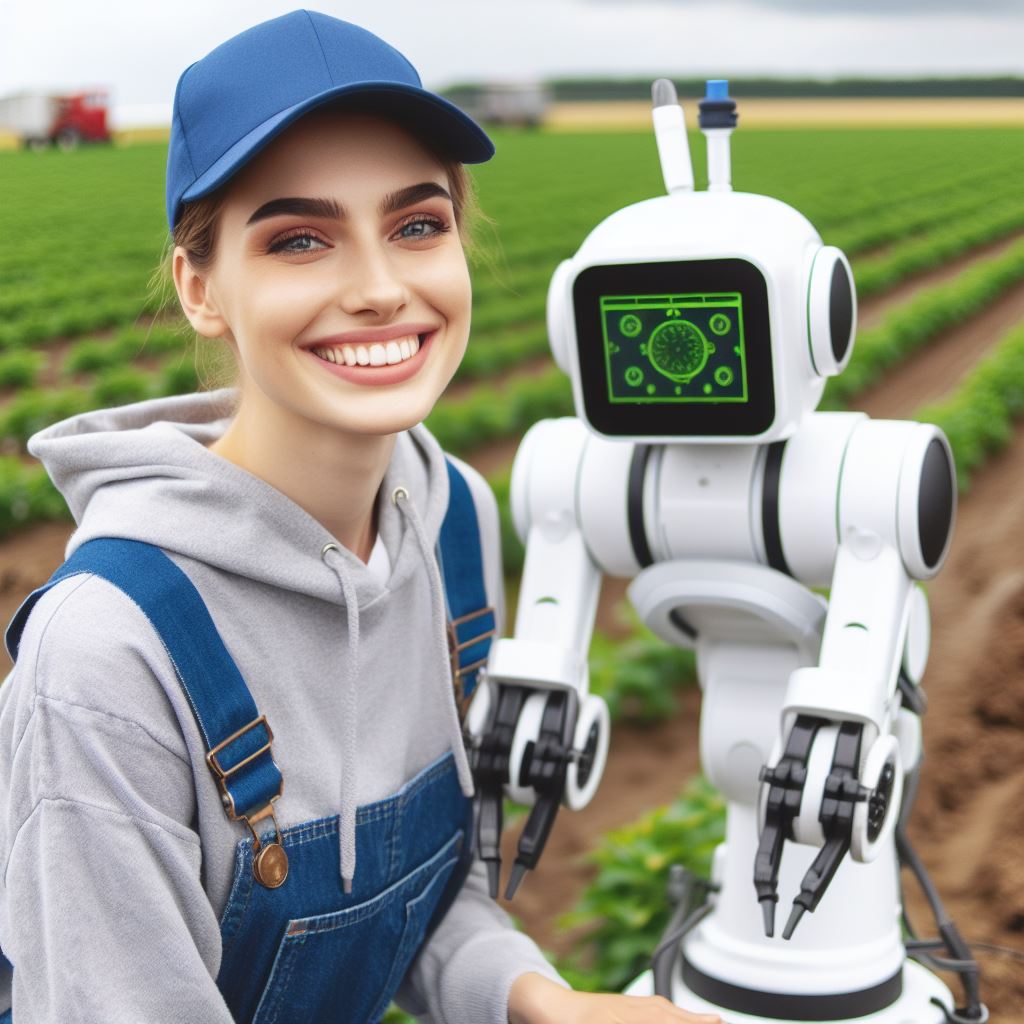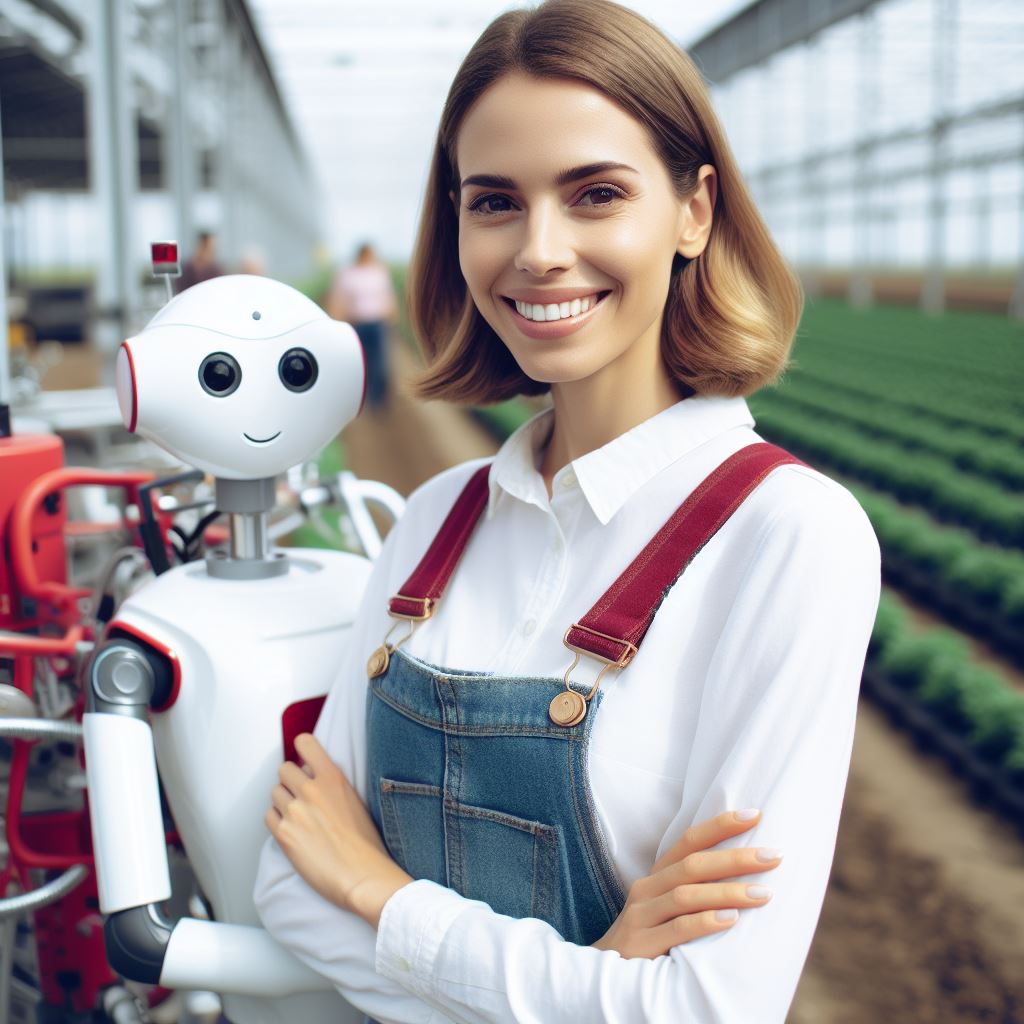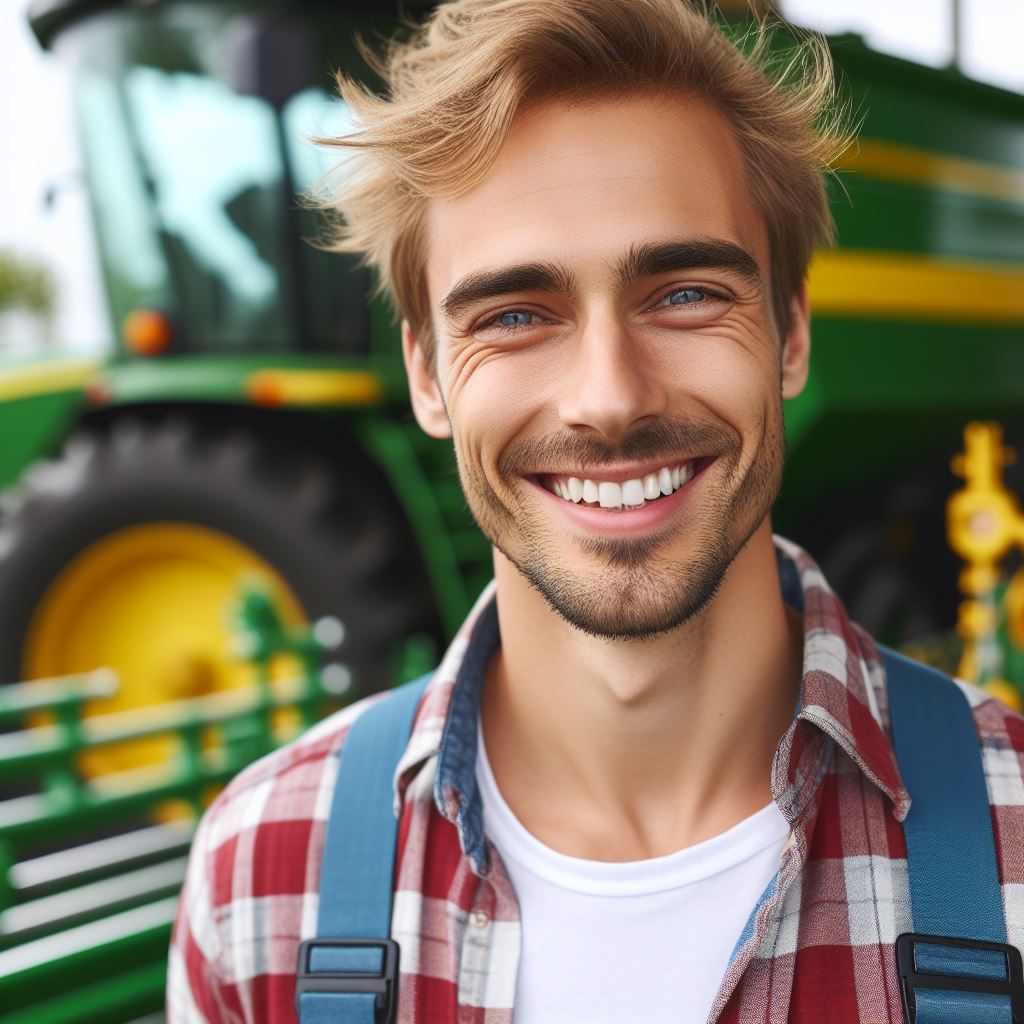Introduction
Drones have rapidly gained popularity in the agricultural sector due to their cutting-edge technology and efficiency.
Farmers have found these unmanned aerial vehicles (UAVs) to be incredibly useful in improving their crop production and overall farm management.
In this blog post, we will delve into the various applications of drones in agriculture, highlighting their transformative impact on the agri landscape.
These mini aircraft equipped with high-resolution cameras and advanced sensors are being deployed for multiple purposes on the farm.
Drones can monitor crops and collect valuable data regarding plant health, water levels, and pest infestations.
This timely information enables farmers to make informed decisions to optimize crop yields.
Moreover, drones aid in precision farming by precisely applying fertilizers, pesticides, and herbicides.
This targeted approach reduces chemical usage, minimizes production costs, and enhances environmental sustainability.
Drones also help in the early detection of diseases and weeds, allowing farmers to take prompt remedial actions.
Another notable advantage of drones is their ability to survey large areas of land in a short time.
They can create accurate and up-to-date maps of the farm, identifying areas that require attention or improvements.
Drones have also facilitated livestock monitoring, helping farmers keep track of their animals’ health, location, and behavior.
Thermal imaging cameras on drones assist in spotting injured or sick animals, enabling timely veterinary care.
In fact, drones have revolutionized the agricultural industry, empowering farmers with valuable insights and enhancing productivity.
In the following sections, we will explore each application of drones in agriculture in more detail.
Stay tuned for insightful information and inspiring stories of how drones are changing the agri landscape.
The Benefits of Drones in Farms
Improving crop monitoring and assessment
Drones have revolutionized the way farmers monitor and assess their crops.
With their advanced sensors and imaging capabilities, drones can provide real-time data on crop health, allowing farmers to make informed decisions.
By flying over the fields, drones can capture high-resolution images and collect valuable data on plant health indicators such as chlorophyll levels, leaf area index, and biomass.
This information helps farmers detect early signs of stress and take necessary actions promptly, resulting in improved crop productivity.
Furthermore, drones have the ability to identify plant diseases and nutrient deficiencies.
By analyzing multispectral and thermal images, drones can detect subtle changes in plant physiology that may indicate the presence of diseases or nutrient imbalances.
This early detection enables farmers to target specific areas for intervention, minimizing the risk of crop loss and reducing the need for excessive pesticide or fertilizer use.
Enhancing crop spraying and precision agriculture
Traditional crop spraying methods often lead to excessive chemical application, posing environmental risks and increasing costs.
Drones offer a more precise and targeted approach to pesticide application.
Equipped with specialized spraying systems, drones can accurately deliver pesticides to specific areas, reducing chemical wastage and minimizing the negative impact on non-target organisms.
This precise spraying also helps farmers comply with regulatory guidelines and ensures efficient use of resources.
In addition to pesticide application, drones play a crucial role in optimizing water and fertilizer usage.
By analyzing crop data collected through aerial imaging, drones can identify areas with varying water and nutrient needs within a field.
With this information, farmers can apply water and fertilizers more efficiently, avoiding over-irrigation and excessive fertilizer use.
This not only saves costs but also promotes sustainable farming practices, minimizing the potential for nutrient leaching and water pollution.
Assisting with livestock management
Drones are not only beneficial for crop monitoring but also for livestock management.
With their aerial surveillance capabilities, drones can monitor and track livestock, providing valuable insights into their behavior, health, and well-being.
Farmers can identify potential issues such as injured or sick animals, overcrowding, or unusual behavior patterns, enabling timely intervention and improved welfare.
Moreover, drones can help in locating lost animals and managing herds more efficiently.
Instead of relying solely on manpower or traditional methods, drones equipped with thermal imaging cameras can quickly locate missing animals in vast areas.
This saves farmers valuable time and effort in searching for lost livestock, ensuring swift retrieval and minimizing potential losses.
Additionally, drones can assist in managing large herds by aiding in mustering and movement control, ultimately improving overall operational efficiency.
In short, drones offer significant benefits in farming, revolutionizing crop monitoring, spraying techniques, and livestock management.
With their ability to provide real-time data on crop health, identify plant diseases, and optimize resource usage, drones enable farmers to make informed decisions, reduce costs, and promote sustainable farming practices.
Moreover, their assistance in livestock management improves animal welfare and enhances operational efficiency.
As technology advances, drones are set to play an increasingly vital role in shaping the future of agriculture.
Read: E-Health for Cattle: Tech Advancements
Transform Your Agribusiness
Unlock your farm's potential with expert advice tailored to your needs. Get actionable steps that drive real results.
Get StartedOvercoming Challenges and Limitations
Regulations and ethical considerations
When it comes to drones in agriculture, several challenges and limitations must be overcome for widespread adoption and success.
Regulations play a pivotal role in ensuring safe and responsible drone usage.
Currently, there are rules and guidelines established by regulatory bodies that address the operation of drones in agriculture.
These regulations primarily focus on flight permissions, altitude restrictions, and adherence to airspace regulations.
However, it is essential to keep track of any evolving regulations and changes that may impact the usage of drones in farming.
The agricultural community should actively engage with regulatory authorities to advocate for policies that support the integration of drones while maintaining safety and privacy standards.
Privacy and safety concerns are critical factors to consider in the context of drone operations.
Privacy is a primary concern since drones capture aerial images and data that may include confidential information about farmers’ practices.
Implementing strict protocols to handle and protect data, as well as obtaining consent from farmers, helps address privacy concerns.
Equally important is ensuring the safety of drone operations by establishing no-fly zones near sensitive areas and implementing safety protocols for drone pilots.
Costs and accessibility
Alongside regulations and ethical considerations, the costs associated with implementing drone technology in farms need to be carefully evaluated.
Initially, purchasing drones, sensors, and associated equipment can be a significant investment.
However, the benefits, such as improved crop monitoring, yield estimation, and early pest detection, can provide a substantial return on investment over time.
Farmers need to assess their financial capabilities and consider long-term cost savings and increased productivity.
Moreover, the accessibility and affordability of drones may vary across different regions. Some areas may face limited availability of drones due to logistical challenges or regulatory restrictions.
Affordability is another consideration, as the costs of drones can vary significantly based on location and market demand.
Ensuring equal access to drone technology for farmers in all regions, regardless of geographical constraints, promotes equitable agricultural development.
In essence, while drones present significant advancements in agriculture, there are challenges and limitations to be overcome in their implementation.
Regulations should be continuously evaluated and refined, focusing on safety, privacy, and responsible drone usage.
The initial costs of adopting drone technology should be carefully considered, weighing the potential long-term benefits.
Finally, ensuring accessibility and affordability of drones allows farmers from various regions to harness the advantages of this technology.
With proactive efforts, these challenges can be overcome, transforming the agricultural landscape through the integration of drones.
Read: Irrigation Tech: Saving Water in Farming
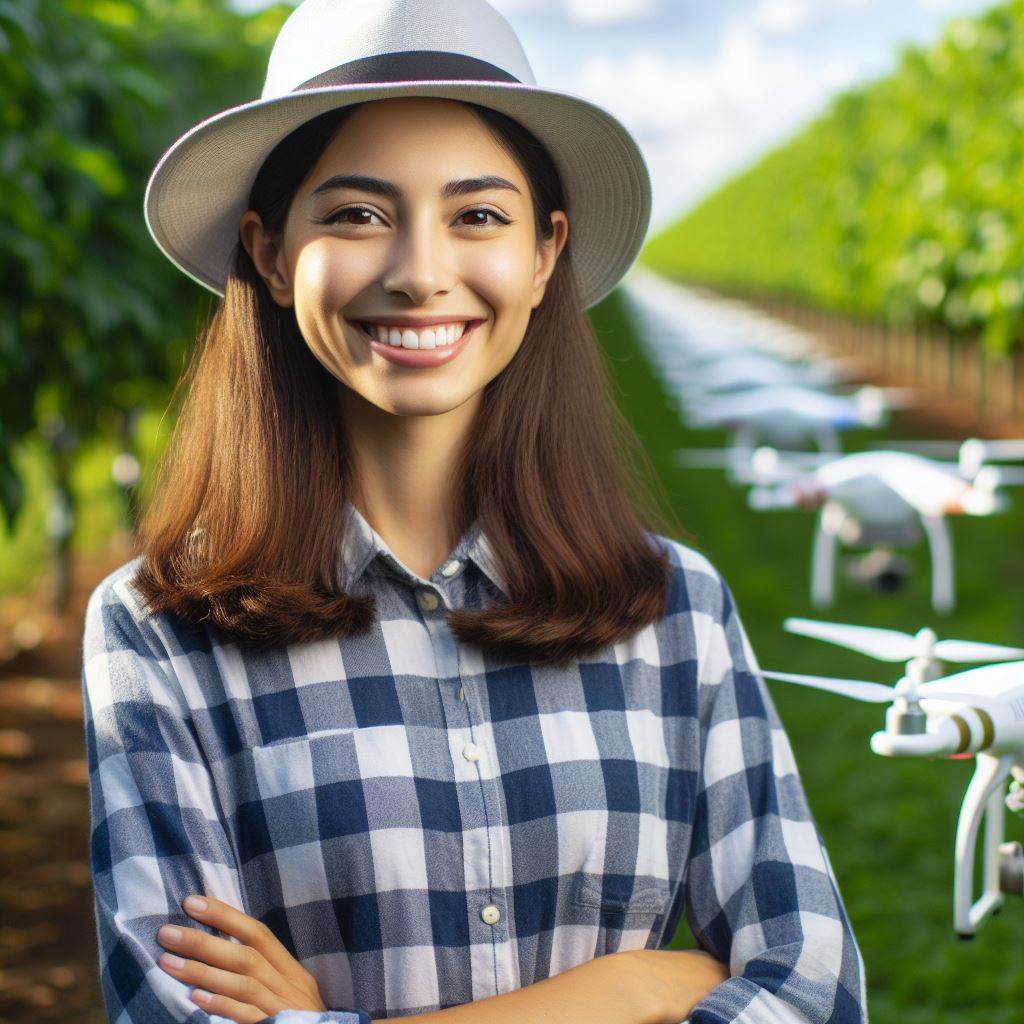
Case Studies: Successful Integration of Drones in Farms
Specific examples where drones have made a significant impact
Drones have proven to be game changers in the agriculture industry, revolutionizing farming practices and transforming the agri landscape.
In this section, we will delve into specific examples where drones have made a significant impact on farms, leading to increased crop yields and improved precision agriculture practices.
1. Increased Crop Yields through Drone-Assisted Monitoring
One farm that serves as a prime example of how drones can revolutionize crop production is Smithson Farms, located in the heartland of Iowa.
Smithson Farms specializes in growing corn and soybeans, and with the help of drones, they were able to take their yields to new heights.
By utilizing drones equipped with advanced imaging technology, Smithson Farms gained invaluable insights into their crops’ health and growth patterns.
The drones captured high-resolution aerial images, providing detailed information about the farms’ fields.
With this data, the farmers could identify specific areas experiencing nutrient deficiencies or signs of disease, allowing them to address these issues promptly.
The farm’s agronomists and drone operators collaborated closely, examining the images captured by the drones to determine the optimal timing for applying fertilizers, pesticides, and herbicides.
This precise timing ensured maximum efficiency and minimized the risk of overusing chemicals, resulting in healthier crops and increased yields.
Smithson Farms reported that their crop yield increased by a staggering 15% after implementing drone-assisted monitoring.
By accurately identifying problem areas and adjusting their farming practices accordingly, they were able to unlock the full potential of their fields.
2. Improved Precision Agriculture Practices with Drones
Green Acres, a family-owned farm nestled in the scenic countryside of California, embraced drones as a key component of their precision agriculture practices.
This farm primarily cultivates vineyards and orchards, and they credit their recent success to the integration of drones.
Drones equipped with cutting-edge sensors and cameras allowed Green Acres to gather data that was impossible to obtain through traditional means.
They could monitor crucial parameters such as soil moisture, plant health, and overall crop condition with precision and efficiency.
By analyzing this data, the farm’s agronomists made data-driven decisions to optimize their farming practices.
For instance, drones aided Green Acres in implementing a targeted irrigation system.
By identifying areas with varying levels of moisture, the farm could adjust their irrigation schedules and water usage, eliminating water wastage and ensuring each plant received the necessary amount.
Furthermore, drones helped Green Acres identify signs of disease or pest infestation at an early stage.
By detecting these issues promptly, the farm could take immediate action to mitigate the spread and prevent significant crop losses.
As a result of embracing drone technology, Green Acres witnessed a remarkable improvement in their precision agriculture practices.
Crop quality and overall yield significantly improved, and the farm reported a 20% reduction in chemical usage, leading to cost savings and environmental sustainability.
In general, these case studies highlight the transformative power of drones in the agricultural sector.
By assisting farmers in monitoring crops with greater accuracy and precision, drones have proven to be invaluable tools for increasing crop yields and improving farming practices.
As drone technology continues to advance, it is likely that more farms will benefit from their integration, forever changing the agri landscape for the better.
Read: Climate-Smart Agriculture: Tools & Techniques
Explore Further: Soil Health: AI and Sensor Revolution
Future Possibilities and Implications
In the previous sections, we have delved into the various applications of drones in agriculture.
We explored their role in crop monitoring, livestock management, and even the potential for precision spraying.
Now, let’s take a step further and explore the future possibilities and implications of drone technology in farming.
Potential advancements in drone technology for farming
1. The use of artificial intelligence and machine learning in drone applications
Artificial intelligence (AI) and machine learning can push the boundaries of drone technology in agriculture.
By analyzing vast amounts of data collected by drones, AI algorithms can provide valuable insights and make informed decisions.
These algorithms can identify crop diseases, monitor plant health, and even predict pest infestations.
By combining this advanced technology with drones, farmers can optimize their agricultural practices and achieve higher yields.
2. Potential for drones to assist in autonomous farming practices
The integration of drones with autonomous farming practices has the potential to revolutionize the agricultural landscape.
With the help of advanced sensors and computer vision technology, drones can navigate fields, collect data, and perform tasks with minimal human intervention.
This can include tasks such as soil sampling, seeding, irrigation, and even harvesting.
The ability of drones to operate autonomously can increase efficiency, reduce costs, and enable farmers to focus on other critical aspects of their operations.
Potential implications of widespread drone adoption in agriculture
1. Impact on job roles and labor requirements in farming
As drones become more prevalent in agriculture, it is important to consider the potential impact on job roles and labor requirements.
While drones can automate certain tasks, they cannot replace the expertise and experience of farmers entirely.
However, the introduction of drones may change the skill sets required in farming.
Farmers may need to develop new skills such as drone operation, data analysis, and interpretation.
Additionally, there might be a shift in job roles towards managing and overseeing drone operations, rather than actively engaging in manual labor.
Showcase Your Farming Business
Publish your professional farming services profile on our blog for a one-time fee of $200 and reach a dedicated audience of farmers and agribusiness owners.
Publish Your Profile2. Potential benefits for sustainable farming practices and environmental conservation
The widespread adoption of drones in agriculture holds great potential for promoting sustainable farming practices and environmental conservation.
Drones can collect data on soil conditions, water usage, and fertilizer application, enabling farmers to optimize resource utilization and reduce waste.
Moreover, drones can help monitor and detect signs of soil erosion, pollution, or illegal logging, contributing to environmental conservation efforts.
By adopting drone technology, farmers can minimize their environmental footprint while maximizing productivity.
In a nutshell, the future possibilities of drone technology in agriculture are exciting.
Advancements in artificial intelligence and machine learning are unlocking new capabilities for drones.
Moreover, the widespread use of drones can bring significant changes to job roles, labor requirements, and sustainable farming practices.
As we continue to explore and innovate, drones have the potential to transform the agri landscape, making farming more efficient, productive, and environmentally friendly.
Read: Vertical Farming: Tech Meets Tradition
Conclusion
The benefits, challenges, and future possibilities of drones in farming
Drones have revolutionized farming with benefits such as precision agriculture, enhanced crop monitoring, and reduced labor costs.
However, challenges including regulatory constraints and initial investment costs persist.
Looking forward, drones hold immense potential for advancing agricultural practices through improved data analytics, autonomous operations, and enhanced efficiency.
The transformative impact of drones on the agricultural landscape
The introduction of drones marks a significant turning point in agriculture, transforming traditional farming methods and reshaping the agricultural landscape.
With their ability to provide real-time insights and facilitate targeted interventions, drones are driving innovation and sustainable practices, ensuring a more resilient and productive future for farmers worldwide.

